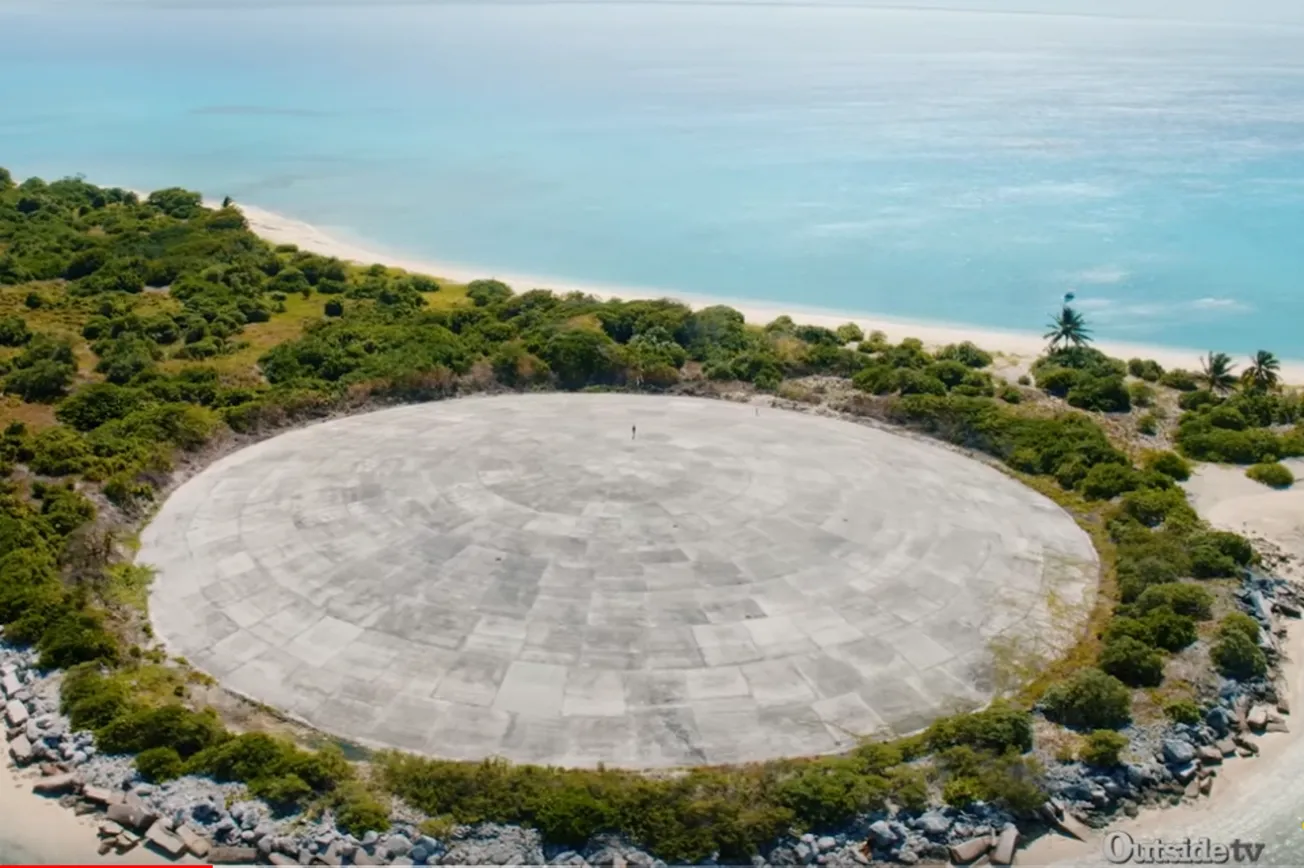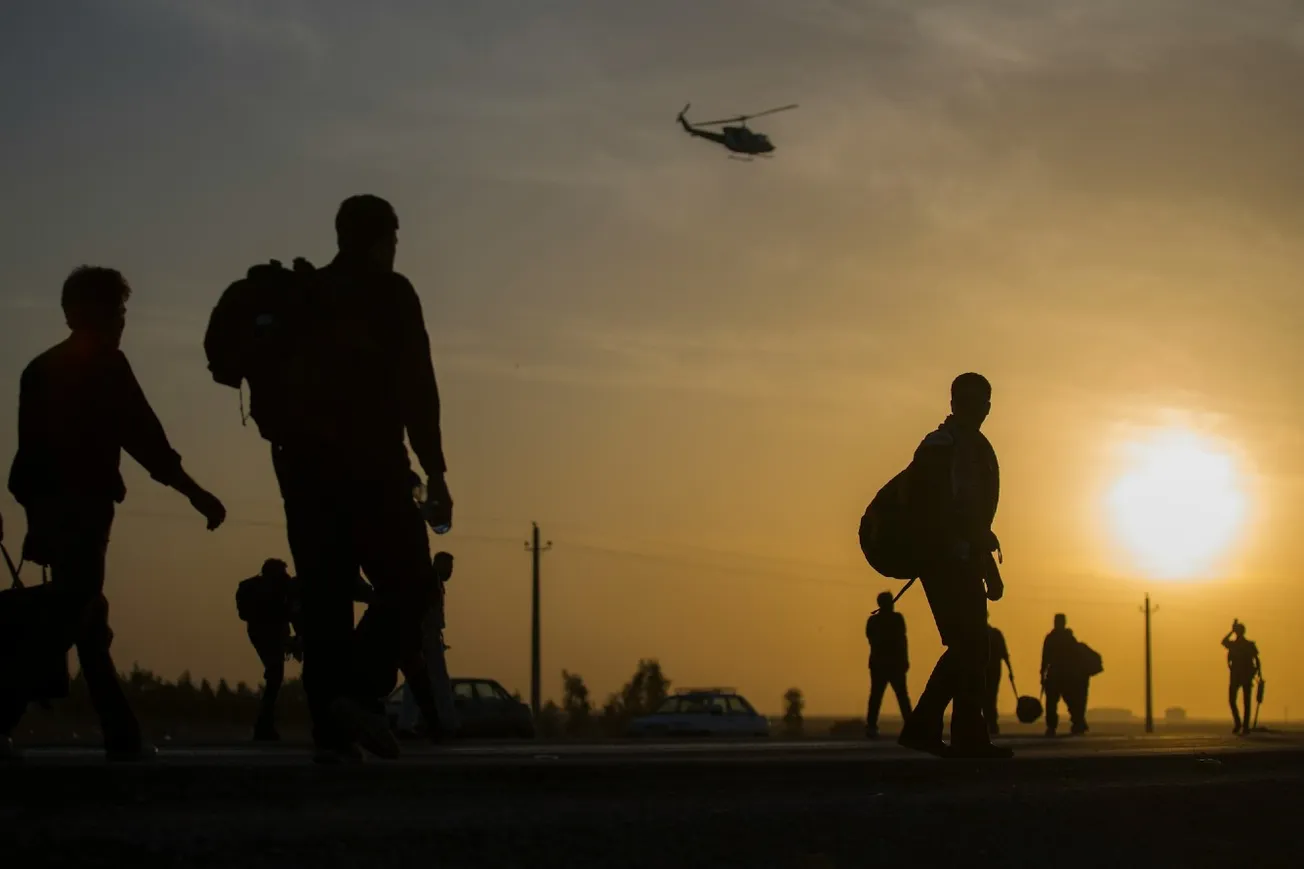The Marshall Islands is facing a two-pronged threat to its very survival. While the causes of one are debatable, the responsibility for the other lies solely with a nation that sees itself as the defender of freedoms and security for all people. The in-depth explainer looks at what actually went down on the islands half a century ago.
One is climate change. It affects the island republic of twenty-nine atolls, five individual islands, and numerous reef systems spread across 750,000 square miles of the Pacific Ocean. Rising sea levels, dwindling fish stock, and vagrant weather threaten the very existence of these low-lying atolls and the islanders' livelihood.
While a significant chunk of the world population remains skeptical of human contribution to climate change, the other threat is indisputably manmade – specifically, it's U.S.-made: nuclear waste and contamination.
A Bit Of History
The islands are remnants of ancient volcanoes and were settled 3000 years ago. Located between Australia and Hawaii, these picturesque atolls and islets are mere dots in the vast expanse of the Pacific Ocean.
During WWII, Kwajalein and Enewetak came into American hands after they defeated Japanese troops on these atolls. The strategic location prompted the U.S. to establish military bases on the new territory.
At the end of the "War to end all Wars," Marshall Islands were included in the United Nation's Trust Territory of the Pacific Islands and came under U.S. administration. The status quo remained until it became an internally self-governing republic in 1979.
On A Nuclear Path
The Cold War that followed WWII fuelled an arms race of unprecedented proportions. A bigger arsenal of arms, more powerful missiles, atomic weapons capable of large-scale destruction, and innovative biological weapons were thought to be necessary to counter the threat posed by the enemy – the Soviet Union, a nuclear peer. And the U.S. went about expanding its nuclear arms portfolio with a single-minded determination.
The augmented nuclear capability was expected to deter future wars. It was to hold off the evil represented by the then-USSR. It was for the advancement of Science. It was to ensure peace for all people of the world. Those were the arguments used to justify the U.S. administration's actions for the next decade and a half.
The hunt for a suitable place to conduct these known dangerous tests ended with the Marshall Islands. And the fate of these islands was sealed – or, as we are learning now, not sealed well enough.
Marshall Island's remote location, sparse population, proximity to other U.S. military facilities, and perceived "unimportance" made it the ideal nuclear testing ground. About five thousand miles away from the U.S. mainland, it was deemed far enough away to safeguard the American population.
The Astounding Numbers
67 nuclear tests in 12 years.
It is well known that America conducted 67 nuclear tests between 1946 and 1958 on various atolls of the Marshall Islands. The first test was carried out on July 1, 1946. Subsequently, 23 were conducted on Bikini Atoll and 43 near Enewetak Atoll. Nine of those bombs ranged in size from 23 to 225 kilotons. The nuclear tests caused four islands to be "partially or completely vapourised."
America successfully tested thermonuclear weapons and the first successful hydrogen bomb on the island. The largest artificial explosion ever recorded was the detonation of Castle Bravo, a nuclear bomb 1000 times more potent than "Little Boy," which was dropped on Hiroshima. The radioactive fallout of the explosion was later detected as far away as Japan, India, Australia, Europe, and the United States.
Worse, a test shot on August 6, 1958, misfired, spraying plutonium fuel across Runit Island. U.S. authorities got there two days later to evacuate the natives. By then, the damage was done.
With mounting international pressure to cease nuclear tests, America detonated 35 bombs in 112 days in 1958 alone. The thermonuclear tests were conducted on or over land and underwater – leading to radioactive contamination of the air, land, and water.
The data collected from the tests and the islands' inhabitants proved invaluable. But, America faced backlash for displacing the islanders and making them subjects of a study without acquiring their fully informed consent.
There's More
Once nuclear testing stopped owing to international pressure, the U.S. used these islands as testing grounds for bio-weapons. Virulent bacteria were released to study its effects. A 2002 military fact sheet details how U.S. scientists, with the administration's blessings, sprayed "one of the most potent bacterial superantigens" known to cause toxic shock and food poisoning over Lojwa Island. According to available military data, a single weapon had a 30% casualty rate and could cover over 926.5 square miles.
On the atolls, conventional bombs were detonated to study the impact. Ballistic missiles were launched from California, targeting the islands for the next 18 years.
Besides continuing to use the atolls as a testing ground, the U.S. saw the islands as a nuclear waste dump. It has come to light that 130 tons of contaminated soil from the atomic test site in Nevada was taken to the island for "storage."
Toll On The Atolls' People
For science and world peace, the islanders were forced to evacuate and leave their ancestral lands. The move irreparably destroyed their cultural identities, livelihoods, and ties to their land. Though it was promised that they could one day return, it remains a distant dream, even after half a century.
The consequences of the actual tests were far more devastating. Many islanders suffered burns and radiation-induced diseases. Ignorant of the dangers of radiation, documented evidence shows that islanders on Rongelap ate the radioactive fallout that fell from the sky, thinking it was snow.
Birth defects and miscarriages became prevalent among the population. The occurrence of various types of cancers among islanders skyrocketed. According to data, more than half the cases can be attributed to exposure to radiation. In 2010, the National Cancer Institute reported, "As much as 1.6% of all cancers among those residents of the Marshall Islands alive between 1948 and 1970 might be attributable to radiation exposures resulting from nuclear testing fallout."
Natives were encouraged to return to their islands just three years after the nuclear tests without a thorough understanding of the risks involved. The move was once again justified in the name of science. Merrill Eisenbud, a U.S official with the Atomic Energy Commission, said at a January 1956 meeting of the agency's Biology and Medicine Committee, "Data of this type has never been available. While it is true that these people do not live the way that Westerners do, civilized people, it is nonetheless also true that they are more like us than the mice."
The Doomed Dome
The islanders were initially promised that they could return to their ancestral lands once the tests were complete. To rehabilitate the natives, America began a long-term decontamination project that has yielded mixed results at best.
A mammoth concrete dome, proportionate to more than thirty Olympic-sized swimming pools, was built to hold radioactive soil, debris, and lethal amounts of plutonium - by-products of American atomic tests. The Rumit Dome, dubbed "The Tomb" by the locals, contains more than 3.1 million cubic feet of hazardous nuclear waste. Military documents cite the structure as one that fulfills the "moral obligation incurred by the United States" to the Marshallese.
But the fact is the Rumit Dome is a storage facility, not a radiation shield. That Americans were aware that the structure was ineffective in containing radiation is evident from U.S. military reports of a meeting which states, "of those present seemed to realize that radioactive material was leaking out of the crater even then and would continue to do so."
Marshallese officials say they were kept in the dark by the U.S. authorities regarding the dome's long-term integrity to store nuclear waste safely. While to the U.S., the dome served the "intended purpose," it is not consistent with U.S. Nuclear Regulatory Commission regulations. Now, five decades later, the dome is showing signs of wear. Radioactive material is seeping into its surrounding waters, causing fish kills and bleaching coral.
While some experts question the physical integrity of the structure and others the slow but steady leak of radioactive substances into the lagoon, the fact is that the islanders must brace for a potential nuclear disaster on their land, not of their making.
Making Amends
More than a decade after the nuclear tests ceased, the relationship between the U.S. and the Marshall Islands changed. The island nation became a republic in 1979.
The subsequent Compact of Free Association between the two countries granted the republic political independence. While America provides military protection, the islanders are permitted to work and study in the U.S. The compact also set up a Nuclear Claims Tribunal, an independent arbiter to settle property and health claims. The tribunal has ruled the U.S should pay over $2.3 billion in claims to the islanders. Documents show that America has just paid $270 million, and Congress refuses to honor the tribunal's ruling. With no enforcement mechanisms in place, the Marshallese have little recourse other than to press their case wherever they may be heard. But, the islanders have been denied standing to sue in American courts.
The Marshallese have been asking the U.S. for "just compensation" for decades. With the republic securing a seat at the UN Human Rights Council, the islanders have an international platform to air their grievances and demand compensation.
Besides, the compact is up for renegotiation in 2023. Though the Biden administration has expressed willingness to extend the compact, the islanders see it as an opportunity for a historic redressal. The legacy of the nuclear tests hangs over the negotiations. Even as the two governments talk, new geopolitical developments give the islanders more bargaining power.
China, America's strategic long-term adversary, is eyeing these islands for its strategic location. For once, Beijing's interference could bring good tidings to the small republic seeking to be heard.
Conclusion
It would be foolish to think of this as a local problem for the Marshallese to solve or relegate to the past. Should the rising sea level and ocean temperature increase the seepage of nuclear waste and plutonium into the waters around Runit Island, it will not merely remain there. Ocean currents will carry nuclear contamination around the globe. Fish exposed to radiation will find their way to tables across the world.
The 55,000 people of the islands, hundreds of them still suffering from the nuclear test of decades ago, deserve a fair hearing and just redressal. Meaningful and mutually agreeable terms will go a long way in regaining the trust of the island's people. The Biden administration has a historic opportunity to address the concerns of the Marshallese.
Please email editor-tippinsights@technometrica.com
Please share with anyone who would benefit from the tippinsights newsletter. Please direct them to the sign-up page at:
https://tippinsights.com/newsletter-sign-up/








